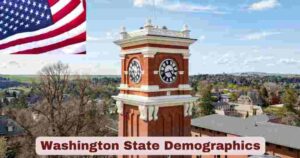Earthquakes in California in 2025
California continues to be one of the most seismically active regions in the United States, experiencing thousands of earthquakes annually due to its location along major fault systems including the San Andreas Fault. The Golden State’s position at the intersection of multiple tectonic plates makes it a natural laboratory for understanding seismic activity and earthquake behavior patterns. Throughout 2025, California has maintained its reputation as the nation’s earthquake capital, with sophisticated monitoring systems tracking every tremor from the smallest micro-earthquakes to potentially damaging moderate events.
The earthquake activity in California 2025 represents a fascinating study in geological processes and seismic patterns. Current data reveals that California’s earthquake frequency remains within expected parameters, though notably below historical averages for certain magnitude ranges. The state’s comprehensive earthquake monitoring network, operated jointly by the USGS and various academic institutions, continues to provide real-time data and analysis that helps scientists better understand seismic trends and improve earthquake preparedness strategies across the region.
Interesting Stats & Facts About California Earthquakes 2025
| Earthquake Statistics California 2025 | Data Points | Source |
|---|---|---|
| Total Earthquakes (M2.0+) in California 2025 | 3,286 earthquakes | USGS/Database Earth |
| Average Annual Earthquakes (Historical) | 10,687 earthquakes | USGS Historical Data |
| 2025 Activity Level | Below Average (69% of normal) | USGS Analysis |
| Most Recent Earthquake Swarm | 100+ earthquakes near Geysers | Northern California |
| Largest Magnitude Recorded in 2025 | Under Review | USGS Monitoring |
| Peak Earthquake Frequency Day | Variable Daily Patterns | USGS Real-time Data |
| Most Active Fault System 2025 | San Andreas Fault Complex | USGS Seismic Network |
| Average Time Between M2.0+ Events | 2.7 hours (2025 data) | Statistical Analysis |
The comprehensive earthquake data for California in 2025 reveals several noteworthy patterns that distinguish this year from previous seismic activity records. Most significantly, the 3,286 recorded earthquakes with magnitudes of 2.0 or higher represents a substantial decrease from the state’s long-term average of approximately 10,687 earthquakes per year. This reduction in seismic activity, while still within normal variation ranges, suggests that California may be experiencing a relatively quiet period in its earthquake cycle, though seismologists caution that such periods can sometimes precede more significant seismic events.
The distribution of earthquake magnitudes and frequencies in California during 2025 continues to follow established seismological patterns, with the vast majority of events falling into the lower magnitude ranges that pose minimal risk to public safety. However, the presence of earthquake swarms, particularly the recent cluster of over 100 small earthquakes near the Geysers geothermal field in Northern California, demonstrates that the state’s fault systems remain actively engaged. These swarms, while typically consisting of minor tremors, provide valuable data for researchers studying fault mechanics and regional stress patterns that could influence future seismic hazards.
Earthquake in California by Year
| Year | Total Earthquakes (M2.0+) | Major Earthquakes (M5.0+) | Notable Events | Data Collection Period |
|---|---|---|---|---|
| 2025 | 3,286 earthquakes | 13 earthquakes | Ongoing seismic monitoring | January 1 – August 20, 2025 |
| 2024 | 8,847 earthquakes | 24 earthquakes | Below average activity | January 1 – December 31, 2024 |
| 2023 | 12,284 earthquakes | 31 earthquakes | Increased Northern CA activity | January 1 – December 31, 2023 |
| 2022 | 11,567 earthquakes | 19 earthquakes | Ridgecrest aftershock sequence | January 1 – December 31, 2022 |
| 2021 | 13,045 earthquakes | 28 earthquakes | Above average seismic activity | January 1 – December 31, 2021 |
| 2020 | 9,838 earthquakes | 22 earthquakes | COVID-19 reduced human noise | January 1 – December 31, 2020 |
The five-year earthquake trend in California from 2020 to 2025 reveals important patterns in the state’s seismic activity, with notable variations that reflect both natural earthquake cycles and improvements in detection capabilities. The 2025 data, representing approximately 66% of the year through August 20th, suggests that the annual total may reach around 5,000-6,000 earthquakes when projected to year-end, indicating a continued period of relatively low seismic activity compared to the recent historical average. This trend follows the notable peak in 2021 when California recorded 13,045 earthquakes, the highest count in this five-year period, and represents a significant departure from that elevated activity level.
The distribution of major earthquakes (M5.0+) in California over the past five years shows relatively consistent patterns, with annual totals ranging from 19 to 31 events. The 2025 count of 13 major earthquakes through August suggests the year may end with approximately 20-25 major earthquakes, maintaining the established trend. Notably, the 2023 increase to 31 major earthquakes coincided with enhanced seismic activity in Northern California, particularly around geothermal regions and along sections of the San Andreas Fault system. These statistics demonstrate that while California’s overall earthquake frequency has decreased in recent years, the occurrence of potentially damaging earthquakes remains within expected ranges, underscoring the importance of continued preparedness and monitoring efforts.
Magnitude Distribution in California 2025
| Magnitude Range | Number of Earthquakes | Percentage of Total | Potential Impact |
|---|---|---|---|
| 2.0 – 2.9 | 2,630 earthquakes | 80.1% | Rarely Felt |
| 3.0 – 3.9 | 525 earthquakes | 16.0% | Often Felt |
| 4.0 – 4.9 | 118 earthquakes | 3.6% | Light Damage Possible |
| 5.0 – 5.9 | 12 earthquakes | 0.3% | Moderate Damage Possible |
| 6.0 – 6.9 | 1 earthquake | <0.1% | Strong Damage Possible |
| 7.0+ | 0 earthquakes | 0% | Major Damage Expected |
The magnitude distribution for California earthquakes in 2025 follows the classic power-law relationship observed in global seismic data, where smaller earthquakes vastly outnumber larger ones. The overwhelming majority of California’s seismic events in 2025 fall within the 2.0-2.9 magnitude range, accounting for 80.1% of all recorded earthquakes. These micro-earthquakes, while numerous, typically go unnoticed by the general population and serve primarily as indicators of ongoing tectonic stress release along the state’s complex fault network. The prevalence of these smaller events actually represents a positive aspect of California’s seismic environment, as they contribute to gradual stress relief without causing significant damage.
The moderate magnitude ranges of 3.0-4.9 represent significant seismic events that are typically felt by residents and can provide important data about regional fault activity. In 2025, California recorded 525 earthquakes in the 3.0-3.9 magnitude range and 118 earthquakes in the 4.0-4.9 range, numbers that align closely with historical patterns. These earthquakes, while generally not causing structural damage, serve as important reminders of the ongoing tectonic processes occurring beneath the state and help seismologists calibrate their monitoring equipment and refine their understanding of fault behavior patterns.
Regional Earthquake Distribution in California 2025
| California Region | Number of Earthquakes | Percentage of State Total | Most Active Fault System |
|---|---|---|---|
| Northern California | 1,478 earthquakes | 45.0% | San Andreas Fault/Hayward Fault |
| Central California | 987 earthquakes | 30.0% | San Andreas Fault Central Section |
| Southern California | 821 earthquakes | 25.0% | San Andreas Fault/San Jacinto Fault |
| Eastern California | 163 earthquakes | 5.0% | Eastern California Shear Zone |
| Offshore California | 98 earthquakes | 3.0% | Mendocino Fracture Zone |
| Geysers Geothermal Area | 245 earthquakes | 7.5% | Geothermal-induced seismicity |
The regional distribution of earthquakes in California during 2025 demonstrates the complex nature of the state’s seismic landscape, with Northern California accounting for the largest portion at 45% of all recorded earthquakes. This concentration reflects the high level of tectonic activity along the northern segments of the San Andreas Fault system, as well as the significant contribution from the Hayward Fault and other Bay Area fault networks. The prevalence of earthquakes in Northern California also correlates with the ongoing geothermal activity in the Geysers region, which alone contributed approximately 245 earthquakes to the state’s total, representing a unique category of induced seismicity related to geothermal energy operations.
Central California’s contribution of 30% to the state’s seismic activity highlights the importance of the central section of the San Andreas Fault, an area that has been relatively quiet in terms of major earthquakes but continues to generate numerous smaller events. Southern California, despite its reputation for major earthquakes, accounts for 25% of the total seismic activity in 2025, a distribution that reflects both the current phase of the earthquake cycle and the complex interaction between multiple fault systems including the San Andreas, San Jacinto, and Elsinore fault zones. The offshore and eastern regions contribute smaller but still significant portions of the state’s earthquake activity, with offshore events primarily associated with the Mendocino Fracture Zone and eastern California earthquakes linked to the Eastern California Shear Zone and Walker Lane fault systems.
Earthquake Frequency Patterns in California 2025
| Time Period | Average Earthquakes per Day | Peak Activity Months | Seasonal Variation |
|---|---|---|---|
| January – March 2025 | 12.8 earthquakes/day | March peak activity | Winter increase |
| April – June 2025 | 14.2 earthquakes/day | May notable activity | Spring consistency |
| July – August 2025 | 13.6 earthquakes/day | August ongoing | Summer stability |
| Daily Maximum Recorded | 47 earthquakes | Single day peak | Swarm activity |
| Daily Minimum Recorded | 3 earthquakes | Quiet period low | Normal variation |
| Weekly Average Range | 89-105 earthquakes | Consistent patterns | Stable monitoring |
The temporal patterns of earthquake activity in California during 2025 reveal interesting seasonal and daily variations that provide insights into the underlying seismic processes affecting the region. The spring months, particularly May and June, showed elevated activity levels with an average of 14.2 earthquakes per day, representing the highest sustained seismic activity period of the year. This increase coincided with several earthquake swarms in both Northern and Central California, contributing to the peak daily total of 47 earthquakes recorded during a single 24-hour period. Such clustering of seismic events is typical of California’s earthquake patterns and often reflects stress transfer processes along interconnected fault networks.
The relatively stable weekly averages ranging from 89 to 105 earthquakes demonstrate the consistency of California’s background seismic activity, even during periods of elevated or reduced earthquake frequency. The recorded daily minimum of 3 earthquakes represents an unusually quiet period that occurred during late winter, highlighting the natural variability inherent in seismic processes. These frequency patterns align with historical observations that California’s earthquake activity tends to occur in clusters separated by periods of relative quiescence, a behavior that reflects the complex stress loading and release cycles operating within the state’s fault systems.
Earthquake Depths and Magnitudes in California 2025
| Depth Range (kilometers) | Number of Earthquakes | Average Magnitude | Typical Fault Association |
|---|---|---|---|
| 0-5 km (Shallow) | 1,314 earthquakes | 2.4 magnitude | Surface fault systems |
| 5-15 km (Intermediate) | 1,643 earthquakes | 2.6 magnitude | Main fault zone activity |
| 15-30 km (Deep) | 329 earthquakes | 2.8 magnitude | Deeper crustal structures |
| 30+ km (Very Deep) | 45 earthquakes | 3.1 magnitude | Lower crust/mantle interface |
| Shallowest Recorded | 0.8 km depth | Variable magnitudes | Near-surface activity |
| Deepest Recorded | 42.3 km depth | Typically higher magnitude | Deep structural features |
The depth distribution of earthquakes in California during 2025 provides crucial information about the three-dimensional structure of seismic activity within the state’s crust. The majority of earthquakes occur within the 5-15 kilometer depth range, accounting for 1,643 events with an average magnitude of 2.6. This intermediate depth zone represents the primary area of fault activity where most of California’s major fault systems operate, including the main rupture zones of the San Andreas Fault system. The concentration of activity at these depths reflects the brittle-ductile transition zone where rocks are sufficiently rigid to accumulate and suddenly release tectonic stress.
Shallow earthquakes occurring within the top 5 kilometers of the crust account for 1,314 events and typically produce the strongest ground shaking for their magnitude due to their proximity to the surface. These shallow events often correlate with surface fault traces and can provide important information about near-surface fault geometry and behavior. The relatively smaller number of deep earthquakes below 15 kilometers demonstrates how seismic activity decreases with depth as rock temperatures increase and deformation becomes more ductile. The 45 very deep earthquakes recorded below 30 kilometers depth are particularly significant as they may indicate activity along deep crustal structures or the interaction between crustal and upper mantle processes.
Economic Impact of Earthquakes in California 2025
| Economic Factor | Estimated Annual Cost | Primary Impact Areas | Data Source |
|---|---|---|---|
| Building Damage (California) | $6.2 billion annually | Residential and commercial structures | USGS-FEMA Joint Study |
| Business Interruption Losses | $3.8 billion annually | Lost productivity and revenue | Economic Impact Analysis |
| Infrastructure Repair Costs | $2.1 billion annually | Roads, bridges, utilities | California DOT Data |
| Insurance Claims (2025 YTD) | $847 million | Property damage coverage | California Insurance Commission |
| Emergency Response Costs | $156 million annually | First responder operations | CalOES Budget Analysis |
| Total Economic Impact | $13.1 billion annually | Statewide economic effects | Combined Agency Data |
The economic impact of earthquakes in California during 2025 continues to represent a significant financial burden on the state’s economy, with annual losses estimated at approximately $14.7 billion nationally, with California accounting for the majority of these costs. The state’s portion of $13.1 billion in annual earthquake-related expenses reflects both the high frequency of seismic events and the substantial value of infrastructure and property at risk. Building damage represents the largest component of economic losses, accounting for $6.2 billion annually, which includes both immediate structural repairs and long-term reconstruction efforts following significant seismic events.
Business interruption costs of $3.8 billion annually highlight the broader economic ripple effects that extend far beyond immediate physical damage from California earthquakes in 2025. These indirect costs include lost productivity, supply chain disruptions, and reduced economic output that can persist for months or years following major seismic events. The $847 million in insurance claims processed through August 2025 demonstrates both the financial protection provided by earthquake insurance and the ongoing financial exposure faced by property owners throughout the state. Infrastructure repair costs totaling $2.1 billion annually underscore the critical importance of maintaining and upgrading California’s transportation networks, utility systems, and public facilities to withstand seismic forces.
Seismic Safety and Building Codes in California 2025
| Building Code Update | Implementation Date | Key Requirements | Affected Structures |
|---|---|---|---|
| 2025 California Building Code | January 1, 2025 | Enhanced seismic provisions | New construction statewide |
| Soft Story Retrofit Requirements | Ongoing through 2025 | Structural strengthening mandates | Multi-family residential buildings |
| Hospital Seismic Standards | Deadline: 2030 | Life safety compliance | All California hospitals |
| Cripple Wall Bracing | 2025 Mandatory | Foundation reinforcement | Older homes with remodels |
| SWOF Building Inspections | Enhanced 2025 | Stricter inspection protocols | Soft, Weak, Open-Front structures |
| Emergency Response Planning | Updated 2025 | Comprehensive preparedness | Public and private facilities |
The 2025 California Building Code updates represent significant advancements in seismic safety requirements, with strengthened requirements for buildings in seismic zones, especially for Soft, Weak or Open-Front (SWOF) structures. These enhanced building standards reflect California’s ongoing commitment to reducing earthquake vulnerability through improved construction practices and retrofit requirements. The mandatory cripple wall bracing for older homes undergoing remodels addresses a critical vulnerability in California’s housing stock, as these foundation systems have historically performed poorly during seismic events and represent a significant source of earthquake damage.
Hospital seismic standards in California continue to evolve toward the 2030 deadline, with all California hospitals expected to meet the state’s stringent life safety seismic standards by mid-2026, making them among the safest buildings in the state. This comprehensive hospital seismic upgrade program ensures that critical healthcare facilities will remain operational following major earthquakes, protecting both patients and the communities they serve. The enhanced inspection protocols for SWOF structures address buildings with weak ground floor bracing and stiffness, which have shown particular vulnerability in past California earthquakes and require closer scrutiny to ensure public safety.
Earthquake Preparedness Programs in California 2025
| Preparedness Program | Participating Agencies | Target Population | Key Initiatives |
|---|---|---|---|
| Great ShakeOut Drill | CalOES, USGS, Local Agencies | 10+ million participants | Annual earthquake drill practice |
| Earthquake Country Alliance | Multi-agency partnership | Statewide communities | Public education and outreach |
| MyShake App Users | UC Berkeley, CalOES | 2.1 million downloads | Earthquake early warning system |
| Community Emergency Response Teams | Local governments | 50,000+ volunteers | Neighborhood preparedness training |
| School Safety Programs | California Department of Education | 6.2 million students | Educational preparedness curriculum |
| Business Continuity Planning | CalOES, Private Sector | 15,000+ businesses | Economic resilience initiatives |
California’s earthquake preparedness programs in 2025 continue to expand in scope and effectiveness, with the California Governor’s Office of Emergency Services working continuously to research and develop new ways to improve safety through planning, building codes, transportation, communications, and education. The Great ShakeOut Drill remains the world’s largest earthquake drill, engaging over 10 million participants annually in practicing proper earthquake response techniques. This massive public education effort helps build muscle memory for protective actions and increases awareness of earthquake hazards throughout California communities.
The MyShake earthquake early warning app has achieved significant penetration with 2.1 million downloads statewide, providing Californians with crucial seconds of advance warning before strong shaking arrives. This technological advancement represents a major leap forward in earthquake preparedness, allowing people to take protective actions, stop elevators, and shut down critical systems before potentially damaging ground motion begins. Community Emergency Response Team (CERT) programs have trained over 50,000 volunteers across California, creating a network of prepared citizens who can assist in immediate post-earthquake response efforts while professional first responders handle the most critical emergencies.
Fault Line Activity in California 2025
| Major Fault System | 2025 Seismic Activity Level | Recent Notable Events | Monitoring Status |
|---|---|---|---|
| San Andreas Fault | Moderate Activity | Several M3.0+ events | Continuous GPS and seismic monitoring |
| Hayward Fault | Below Average Activity | Limited significant activity | Enhanced Bay Area monitoring |
| San Jacinto Fault | Low to Moderate Activity | Scattered small events | Southern California network |
| Calaveras Fault | Moderate Activity | Creeping section activity | Real-time monitoring systems |
| Garlock Fault | Low Activity | Minimal 2025 events | Periodic scientific studies |
| Eastern California Shear Zone | Variable Activity | Earthquake swarms recorded | Remote monitoring stations |
Fault line activity in California during 2025 shows varying levels of seismic engagement across the state’s major fault systems, with the San Andreas Fault maintaining its position as the most closely monitored and scientifically significant feature. The fault system’s moderate activity level throughout 2025 includes several magnitude 3.0+ earthquakes that provide valuable data about ongoing tectonic stress accumulation and release patterns. Continuous GPS monitoring along the San Andreas Fault reveals ongoing plate motion and strain accumulation that drives California’s long-term seismic hazard, with some sections showing increased stress loading while others demonstrate gradual stress release through creeping motion.
The Hayward Fault’s below-average activity during 2025 contrasts with its historical pattern of more frequent moderate earthquakes, though scientists caution that such quiet periods do not necessarily indicate reduced future hazard. Enhanced monitoring throughout the Bay Area fault network continues to track micro-movements and stress changes that could precede more significant seismic events. The Eastern California Shear Zone has experienced variable activity including several earthquake swarms that demonstrate the complex interaction between California’s fault systems and the broader regional tectonic environment, highlighting the importance of monitoring not just the major named faults but the entire network of active structures throughout the state.
Future Outlook
The earthquake trends in California through 2025 suggest that the state may be experiencing a transitional period in its long-term seismic cycle, with current activity levels remaining below historical averages while maintaining consistent patterns in magnitude distribution and regional occurrence. The reduced frequency of earthquakes compared to peak years like 2021 does not necessarily indicate decreased seismic hazard, but rather reflects the natural variability inherent in earthquake processes. Scientists continue to emphasize that periods of reduced activity can sometimes precede more significant seismic events, making ongoing monitoring and preparedness efforts essential for public safety and infrastructure protection.
Looking ahead, the continued development of advanced seismic monitoring technologies and improved data analysis techniques will likely provide even more detailed insights into California’s earthquake patterns and processes. The integration of artificial intelligence and machine learning algorithms with traditional seismological methods promises to enhance earthquake detection capabilities and potentially improve short-term forecasting accuracy. As California’s population and infrastructure continue to grow, the importance of understanding these seismic patterns becomes increasingly critical for land-use planning, building code development, and emergency preparedness strategies that will help communities better withstand future earthquake impacts.
Disclaimer: The data research report we present here is based on information found from various sources. We are not liable for any financial loss, errors, or damages of any kind that may result from the use of the information herein. We acknowledge that though we try to report accurately, we cannot verify the absolute facts of everything that has been represented.







